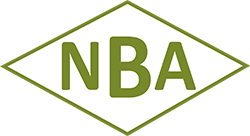Bringing them through the Winter. Preparing for your livestock
15th September 2014
Region: National
The days are shortening, harvest and autumn sowing is mostly done, so now is the time to turn your attention to the winter and your stock. You must ask yourself how you intend to help them come through it, says Charlie Maclaren, board member of The National Beef Association (NBA).
Here he gives a few simple tasks to ensure that productivity is sustained and costs are closely monitored.
First of all, analyse all your home grown bulk forage for feed value, and work out how many tonnes you have. Do the same with any home grown cereals you may have, and also your straw. I have provided a table at the end to help you do this.
You will have an accurate figure for the number of beasts to feed but do you have their weights? If you don’t know what size they are how can you feed them correctly?
Next you must decide what live weight gain you want. Divide this by the number of days housed or the number of days you will feed them for. To convert this amount into a daily diet you may need some nutritional help. When you are working out what the daily diet should be for the period, remembering that as they grow they will eat more.
You may need to buy in other products to complete the diet, but now you know how much you need, and when, so you can go to the market place and do your deal with your feed supplier.
If you have had niggling problems at calving or with performance it would be worth doing a mineral profile of your forage, and/or a complete diet check to rule out any antagonists interfering with the animal’s health and performance.
Armed now with all this information you are now in a better place to utilise the full potential of your cattle and of what you have grown. By the use of your weigh scales you can check on the efficiency of the diet and will be able to tweak the diet to improve their daily live weight gain [DLWG], if necessary.
Remember if you can’t measure it you can’t monitor it.
There is probably one other thing I should touch on and this is Mycotoxins. This seems to be the new buzz word that everyone and his dog seems to be talking about. How and why have they just suddenly appeared and what are they? For those of you who have not been affected by them, what do they do? How do you know if you have them and why should you be concerned?
Mycotoxins have been around for years but were only really first identified as little as ten years ago. They affect grass, and are more likely to be found on second cut silage and straw.
Mycotoxin is the name given to the waste product from moulds, found on plants but not visible to the naked eye. They are not a living organism.
There are many different types but the two most common are Deoxynivalenol (don) and Zearalenone (zon) and these affect your stock in different ways.
In dairy cows the signs are easier to spot, with a sudden drop in milk being the most obvious, or cows not achieving their expected milk yield. Most commonly these symptoms effect newly calved cows, more aggressively resulting in very loose dung and a rapid loss in weight. These same symptoms will affect beef cows, mainly causing a mixture of calving problems, including still born calves, and a whole variety of other problems all connected with the animal’s immune system.
Because a suckler cow is fed a more forage-based diet it leaves it more susceptible to the effects. Because these are normally wintered as dry cows it is even harder to spot.
Mycotoxins are a topic on their own, so if you are interested in finding out more about dealing with them read next month’s article, which will be solely about this issue.
In conclusion the best way to limit the effect of increased costs and poor production is to be in front of the game and be prepared. It is all about “Attention to Detail”, and the use of weigh scales lets you monitor performance. This in turn keeps you on track to achieve your targets cost effectively.
Forage Stocks Calculator
GRASS SILAGE
Dry matter Depth of clamp (in meters)
% 1 2 3 4
Dm Fw Dm Fw Dm Fw Dm Fw
16 103 647 139 867 159 996 174 1088
20 120 601 156 778 176 881 191 954
24 134 558 169 705 190 791 205 852
26 140 538 175 674 196 754 211 810
28 146 520 181 646 202 720 216 772
30 151 503 186 620 207 689 221 738
32 156 486 191 597 212 661 226 707
34 160 471 195 575 216 636 231 679
36 164 457 200 555 220 612 235 653
All of the measurements are for Kg per cubic Metre
Wholecrop (fermented) - Calculate on 600kgs per cubic metre freshweight.
MAIZE SILAGE
Dry matter Depth of clamp (in meters)
% 0.5 1 1.5 2 2.5
Dm Fw Dm Fw Dm Fw Dm Fw Dm Fw
25 155 620 173 690 183 730 193 770 200 800
30 177 590 192 640 204 680 216 720 225 750
35 182 520 203 580 217 620 231 660 245 700
- ENDS -

